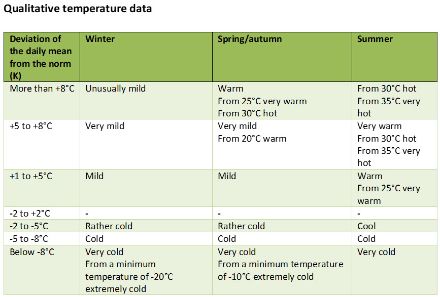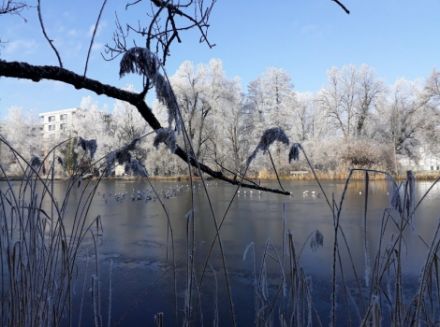Service Navigation
Search
MeteoSwiss uses the unit of degrees Celsius (°C) to measure air temperature. At the automatic monitoring stations, temperature is measured 2 m above the ground on natural, sheltered terrain. The thermometers are not exposed to the weather or to solar radiation. The temperature is measured every 10 minutes at the weather stations (measurement values at meteorological stations).
Temperatures in the lowlands
The weather forecast gives the maximum and minimum temperatures. As a rule, the lowest temperature is registered shortly after sunrise, and the highest temperature during the afternoon. The temperatures given apply to the lowlands, i.e. elevations between 200 and 600 m.a.s.l. Occasionally, qualitative information about the temperature is also given in the weather forecast. This relates to the deviation from long-term averages (climate normals) for the relevant season.

Temperature is dependent on air pressure: the higher the pressure, the higher the temperature. This is why the temperature is generally lower in the mountains than it is in the lowlands, as air expands with increasing altitude, which means the pressure and temperature both drop. There is one exception to this rule, however: If an area of high pressure develops in winter, cold, dense air accumulates in low-lying areas. In such cases, it is milder in the mountains than in the lowlands. This kind of situation is known as a temperature inversion.
Frost and ground frost

Frost is referred to when the temperature drops below zero degrees 2 m above the ground. If the temperature drops below zero degrees at a height of 5 cm above the ground, this is called ground frost. When frost occurs, there is always ground frost, but the reverse is not necessarily true. Between spring and autumn, ground frost warnings are issued when there is a risk of the temperature dropping below zero degrees at a height of 5 cm above the ground. This can pose a threat to vegetation and thus to agriculture.
Zero degree level and temperature at 2,000 m altitude
The zero degree levelcorresponds to the altitude at which a temperature of 0°C is measured in the free atmosphere, i.e. without influence from the terrain. It is reported in the summer, whereas during the winter, weather forecasts give the temperature at 2,000 m altitude (also in the free atmosphere). Due to climate change, the zero degree level in Switzerland has risen by 200 to 700 metres since weather records began over 150 years ago. The rise has been particularly pronounced in winter.
Heat waves
When the mean daily temperature (the average of all measurements taken over a 24-hour period) reaches or exceeds 25°C for at least three days, MeteoSwiss refers to this as a heat wave. If these temperatures are reached on one day or on no more than two consecutive days, MeteoSwiss describes this as a short hot spell. Depending on the mean daily temperature and the duration, MeteoSwiss issues heat warnings between Level 2 and Level 4. In the event of a heat wave, it is important to follow the recommendations for action.
Temperature and climate change
Temperature is the most important parameter for climate-change research. It is an easily measurable parameter for which historical developments can be reconstructed with the help of various different data sources. Temperature is also useful for determining the human influence on climate. To this end, the temperature development is compared with the mean temperature in pre-industrial times, when there was no perceptible effect on the climate from human activity.
The temperature measurements recorded at the automatic monitoring stations are used to calculate the monthly and yearly mean temperatures in Switzerland. These data are summarised in the Climate Bulletins and enable us to track the long-term development of mean temperature in Switzerland.